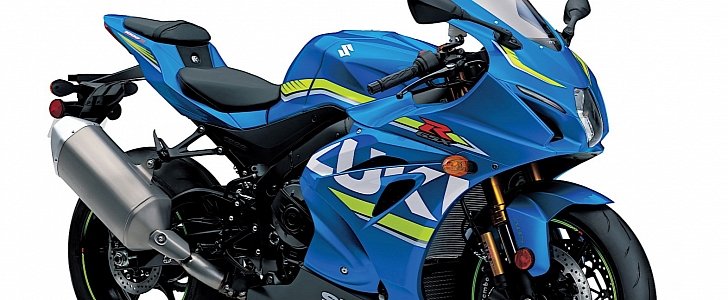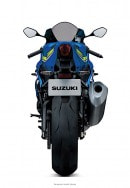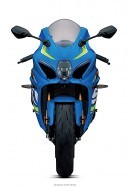Thirty years have passed since Suzuki released the GSX-R platform, and with more than 1 million units sold so far, we can say it is quite a successful model. That’s why the bike maker gave the model an in-depth makeover to keep it in top choices among riders.
“The 6th-generation GSX-R1000 is redefining what it means to be The Top Performer,” the bike maker describes the new motorcycle. “It embodies the life work and professional ambition of Suzuki engineers who are passionate about the GSX-R1000 and its place in motorcycle history. Men who love riding and racing, enthusiasts determined to restore the GSX-R1000 to its proper title of The King of Sportbikes.”
Suzuki also says the 2017 GSX-R is “the most powerful, hardest accelerating, cleanest running GSX-R ever built,” thanks to its compact size, tuned aerodynamics, smoother throttle response and engine efficiency.
The new engine is said to develop 199 hp and 13,200 rpm and 86 lb-ft (116 Nm) of twist at 10,000 rpm. That was possible through a larger bore and a shorter stroke, which translates into a higher compression (13.2:1 versus the old 12.9:1). A new finger-follower valve train replaces the shim under bucket previous type while a new variable valve timing system improves fuel consumption.
As expected, the new GSX-R is packed with electronic gizmos, starting with the Inertial Measurement Unit (IMU) that controls the bike’s 10-level traction control system and ABS. Next, comes the Drive Mode Selector, which allows the operator to switch from different engine mappings and power delivery characteristics.
Also helping the rider is a new quickshifter that works both ways (clutchless up- and down-shift, that is) and a launch control system, while a new LCD instrument panel keeps the rider informed on most of the bike’s parameters.
The chassis is said to be all-new and weight 3 kg (6.6 lbs) less than the old model. Attached to it is a new braced swingarm with better rigidity, while the rear subframe shed 1 kg (2.2 lbs) off its previous weight.
Coming in two versions, the GSX-R1000 is fitted with Showa Big Piston forks, while the GSX-R1000R gets the Balance Free fork model from the same manufacturer. The latter also gets a Showa BFRC (Balance Free Rear Cushion Lite) shock at the back which is said to give riders more road feel.
LED headlights, taillights, and turn signals are offered as standard while the iconic overall GSX-R design has been retained and improved to make the bike more vicious-looking and as aerodynamic as possible. The blue, white, and lime color theme has been carried over although with restyled graphics.
Suzuki also says the 2017 GSX-R is “the most powerful, hardest accelerating, cleanest running GSX-R ever built,” thanks to its compact size, tuned aerodynamics, smoother throttle response and engine efficiency.
The new engine is said to develop 199 hp and 13,200 rpm and 86 lb-ft (116 Nm) of twist at 10,000 rpm. That was possible through a larger bore and a shorter stroke, which translates into a higher compression (13.2:1 versus the old 12.9:1). A new finger-follower valve train replaces the shim under bucket previous type while a new variable valve timing system improves fuel consumption.
As expected, the new GSX-R is packed with electronic gizmos, starting with the Inertial Measurement Unit (IMU) that controls the bike’s 10-level traction control system and ABS. Next, comes the Drive Mode Selector, which allows the operator to switch from different engine mappings and power delivery characteristics.
Also helping the rider is a new quickshifter that works both ways (clutchless up- and down-shift, that is) and a launch control system, while a new LCD instrument panel keeps the rider informed on most of the bike’s parameters.
The chassis is said to be all-new and weight 3 kg (6.6 lbs) less than the old model. Attached to it is a new braced swingarm with better rigidity, while the rear subframe shed 1 kg (2.2 lbs) off its previous weight.
Coming in two versions, the GSX-R1000 is fitted with Showa Big Piston forks, while the GSX-R1000R gets the Balance Free fork model from the same manufacturer. The latter also gets a Showa BFRC (Balance Free Rear Cushion Lite) shock at the back which is said to give riders more road feel.
LED headlights, taillights, and turn signals are offered as standard while the iconic overall GSX-R design has been retained and improved to make the bike more vicious-looking and as aerodynamic as possible. The blue, white, and lime color theme has been carried over although with restyled graphics.




















